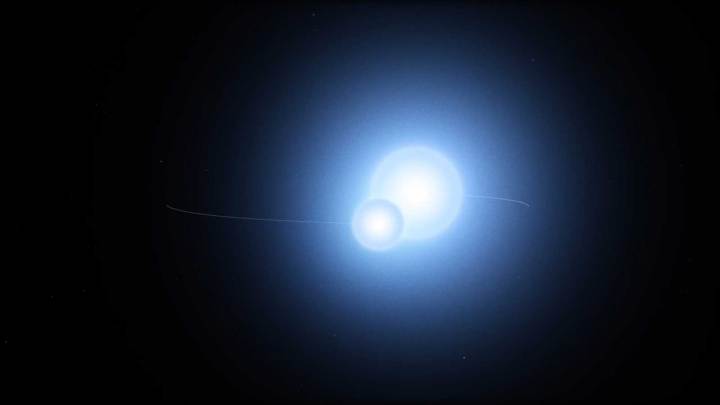
Of all the strange wonders out there in space, there are some examples of elegance more beautiful than we could imagine. One such example is the star system TYC 7037-89-1, recently identified by NASA’s Transiting Exoplanet Survey Satellite (TESS), which includes six stars that orbit each other in an elaborate pattern.
It’s relatively common to find binary systems, with two stars orbit the same center, or even triple systems, with three stars. But six stars in one system is highly unusual.
This particular system consists of three pairs of binaries, whose orbits interlock with each other. Three of the stars — called the primary in each binary pair — are larger than the sun and around the same temperature. The other stars — called the secondaries — are half the sun’s size and about a third of its heat.
“The system has three binaries (call them A, B and C) with orbital periods ranging between one and eight days, and arranged in a hierarchical order,” explained Saul Rappaport, one of the researchers at the MIT Department of Physics, in a statement. “The A binary orbits around the C binary with a period of several years, while the B binary orbits around the A-C quadruple system with a period of several thousand years.
“The amazing thing is that all three binaries have their orbital planes sufficiently well aligned with our line of sight so that we see eclipses from all of them. This, in spite of the huge separations among the three binaries.”
NASA has produced a diagram to help show how this system works:

TESS normally hunts for planets, not star systems, but the method it uses can be applied to stars as well. Systems like this one are interesting not only because they are rare, but also because they can give scientists clues to how systems form and develop. In this case, researchers think that this system may have originally been a binary system of two stars that captured a third star, before all three stars then fragmented to create the six stars seen now.



